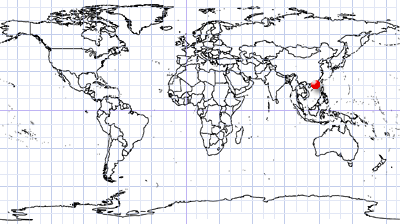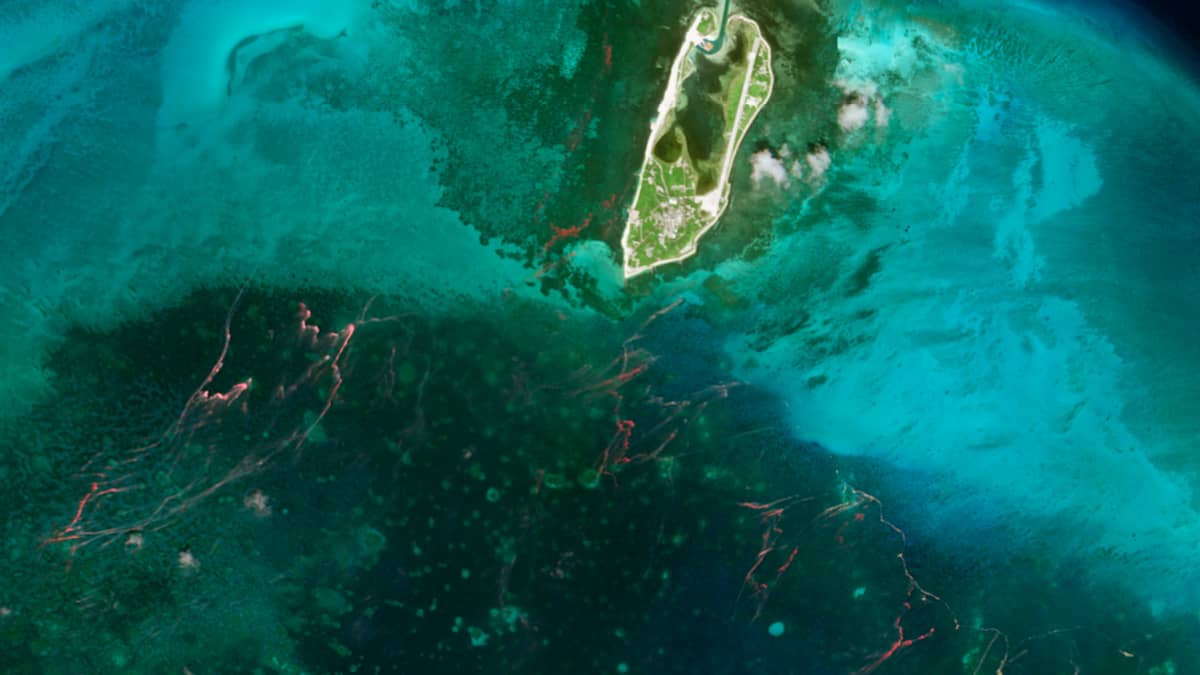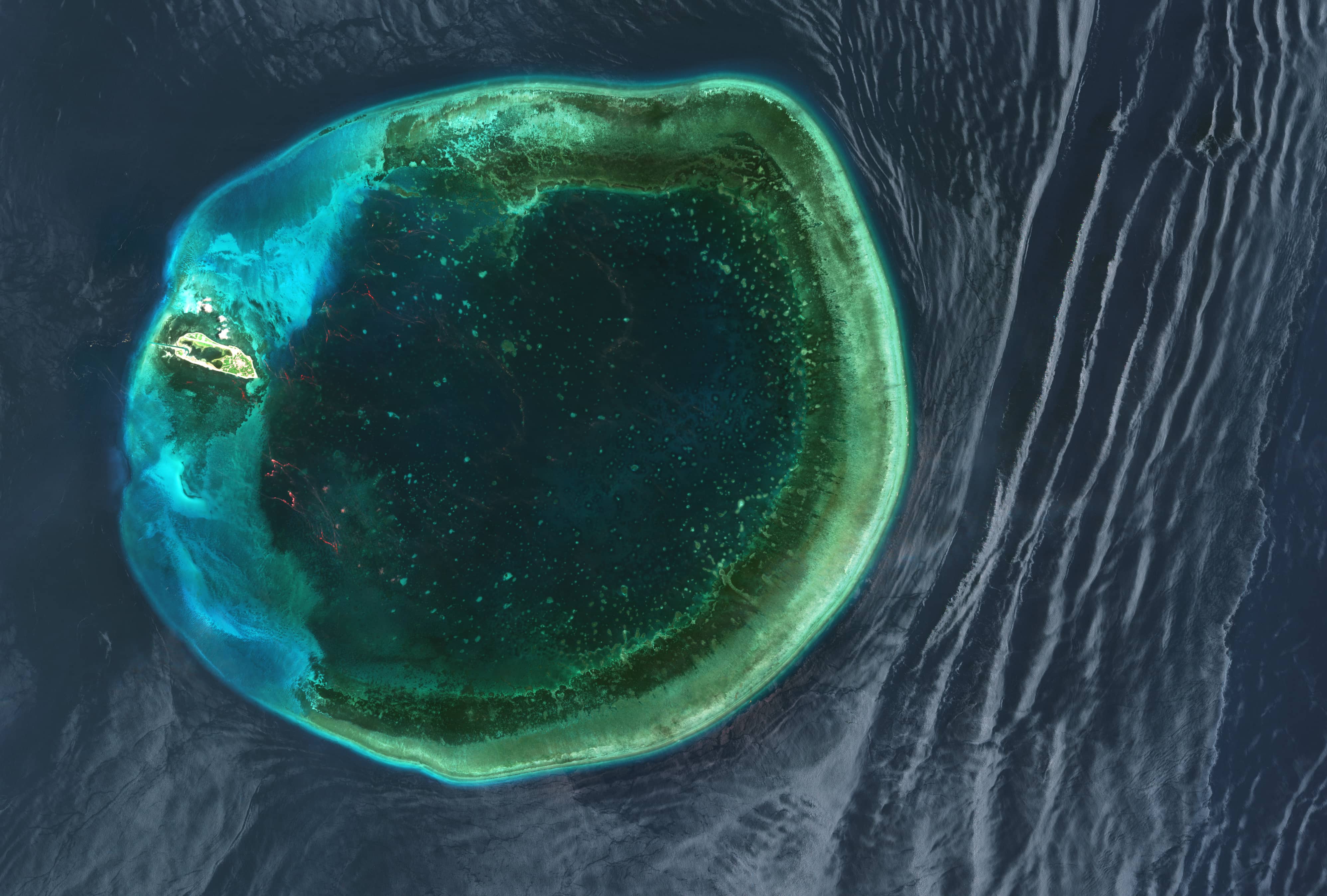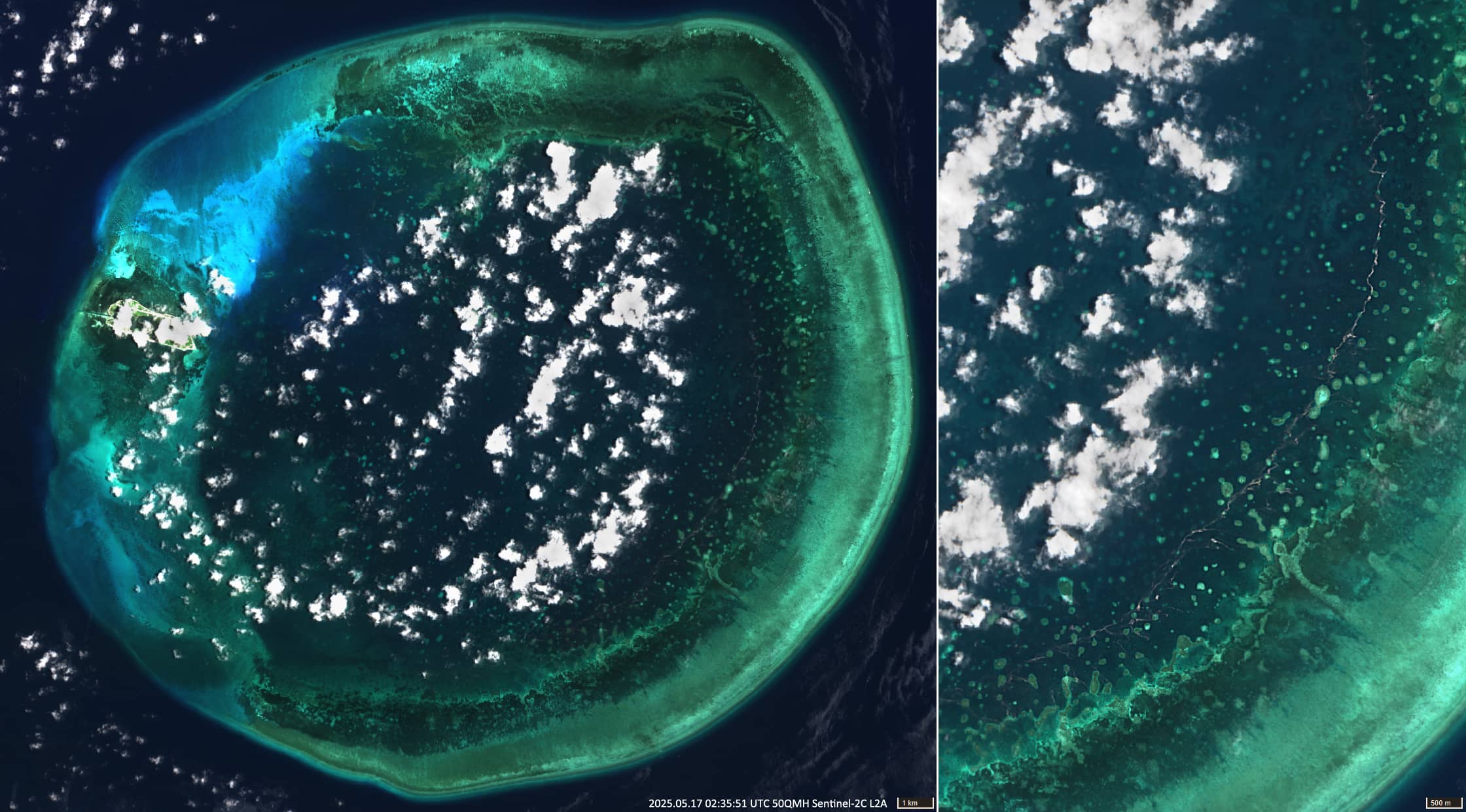
Dongsha Islands
South China Sea
Dates of acquisition:
• 2025.05.19 | 02:41:41 UTC
• 2025.05.17 | 02:35:51 UTC
Sensor: Sentinel-2A L1C, Sentinel-2C L2A
Coordinates: ca. 20.7°N, 116.8°E
The small, remote Dongsha Islands (formerly known as the Pratas Islands and, in Chinese, as Tongsha Islands, or 東沙群島, which literally means “eastern sand”), are located 850 km southwest of Taipei in Taiwan, in the northern part of the South China Sea (20°43′ N 116°42′ E). Pratas Island is 2.8 km long and 0.865 km wide. To the east of the island lie the submerged Vereker Banks: the North Vereker Bank (北衛灘) and the South Vereker Bank (南衛灘). Together, these form a circular coral atoll consisting mainly of rubble corals and reef banks. The atoll has a diameter of about 24 kilometers and surrounds a lagoon with a diameter of around 16 kilometers.
On 19 May, during the overpass of Sentinel-2, red, thread-like structures can be seen in the water, primarily in the lagoon (see Figure 1). These structures are algae that float very close to the surface and at some spots also on top of the water. The algal bloom is characterised by its red colour, which is due to its pigments.The island’s marine flora consists of tropical and subtropical macroalgae communities. Among others, the lagoon is home to Galaxaura, a species of red, vertical, calcifying marine macroalgae. This species mainly occurs in filamentous morphotypes, which are widespread in subtropical reef zones. The region is also home to Rhodophyta, a type of red alga that includes some microscopic microalgae. The red colour of the algae is due to the pigments phycoerythrin and phycocyanin, which mask other pigments, such as chlorophyll a.
In the image of 19 May, thread-like structures can be seen at the western end of the atoll, just behind the lagoon exit (see Figure 1). These algae were obviously carried away by the low tide.
The second notable point is that this observation was made. During Sentinel-2’s existence, events of this intensity have never been observed before. Only on three occasions, in July 2020, May 2021 and February 2024, have faint thread-like structures of a slightly reddish colour been seen. However, this year, they were clearly visible in 4 observations (e.g. Figure 2).
Incidentally, some red algae are an important source of carrageenan, a food additive. They are also used in the production of agar.





